When putting a new sink in your bathroom, you will need to make some decisions. You expect to decide between pedestal, vessel, or something else. But another decision you may have to make is how high your bathroom sink should be. If so, you've come to the right place. We've done the research and have some answers for you.
A bathroom sink should sit somewhere between 29 and 36 inches high, depending on several factors. Traditionally, 32 inches was the norm, but modern standards have made 36-inch height common as well. Your personal preference plays a big role, but some other factors to consider include:
- Type of sink (vessel, undermount, etc.)
- Intended users
- Existing mirrors and trim
- Location of plumbing
- Placement of existing electrical outlets
There are a lot of things to think about. We will discuss this in more detail below, so read on.
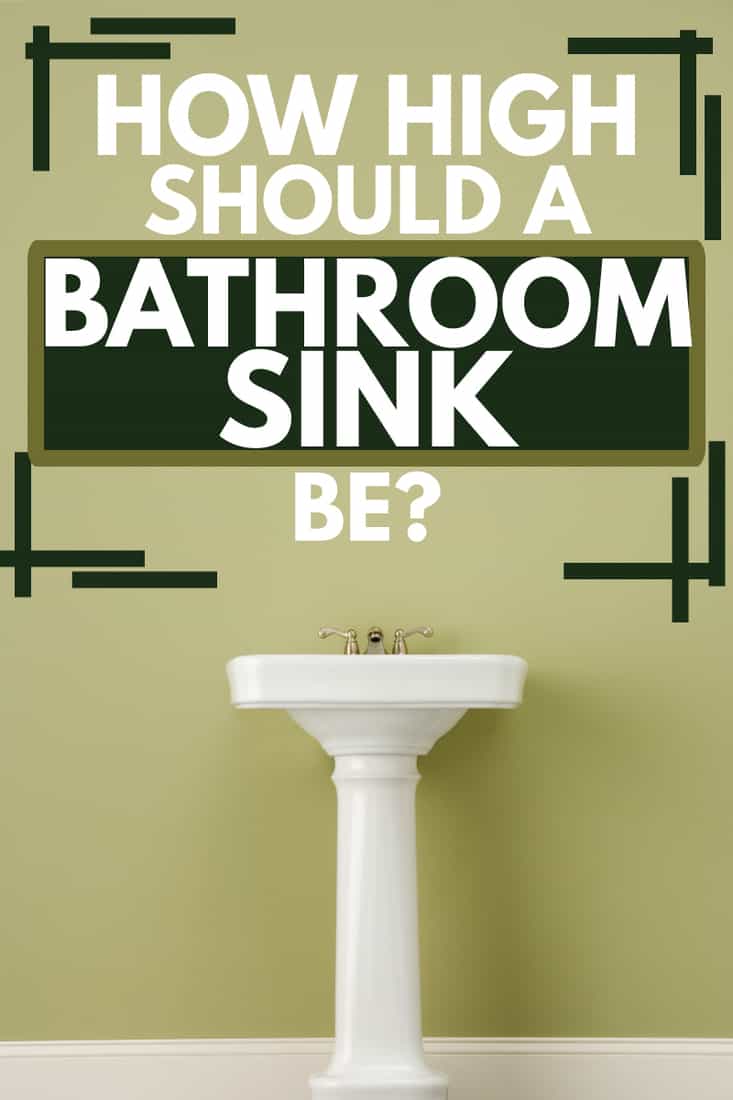
Bathroom Sink Height
A long time standard for bathroom sink height was 32 inches. This became common when homes often had one shared bathroom, and the sink needed to accommodate both children and adults. Now you are likely to have a master bath that won't be used by children or even bathrooms shared between bedrooms specifically designed for children.
People have been getting taller, as well, meaning the old standard may no longer seem like such a decent compromise. This may be especially true in a master bath. But a 36-inch high sink may seem too high in a children's bathroom and might require a step stool for them to reach.
We sometimes add affiliate links and content that was curated and created by our team with the help of advanced ai tools to help showcase the best design styles.
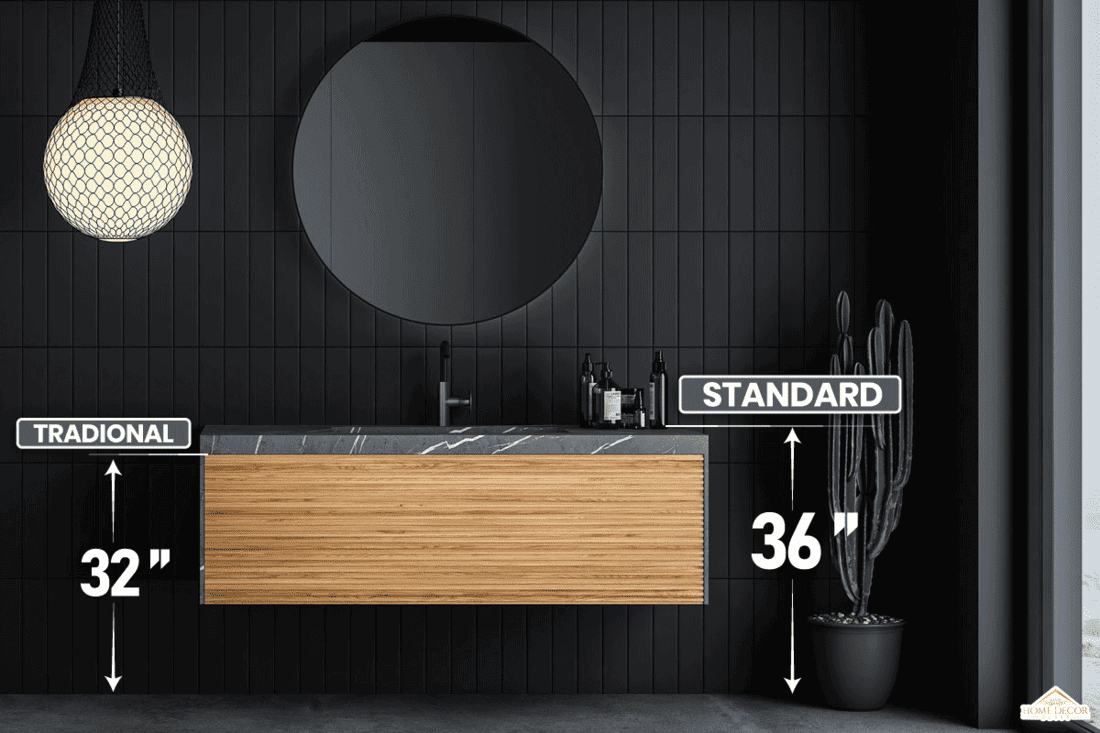
The type of sink you choose will make a difference as well. Some common types you may find are:
- Drop-in
- Undermount
- Vessel
- Pedestal
- Wall-hung
Each of these types has differences you should consider when choosing the height of your sink.
Drop-in
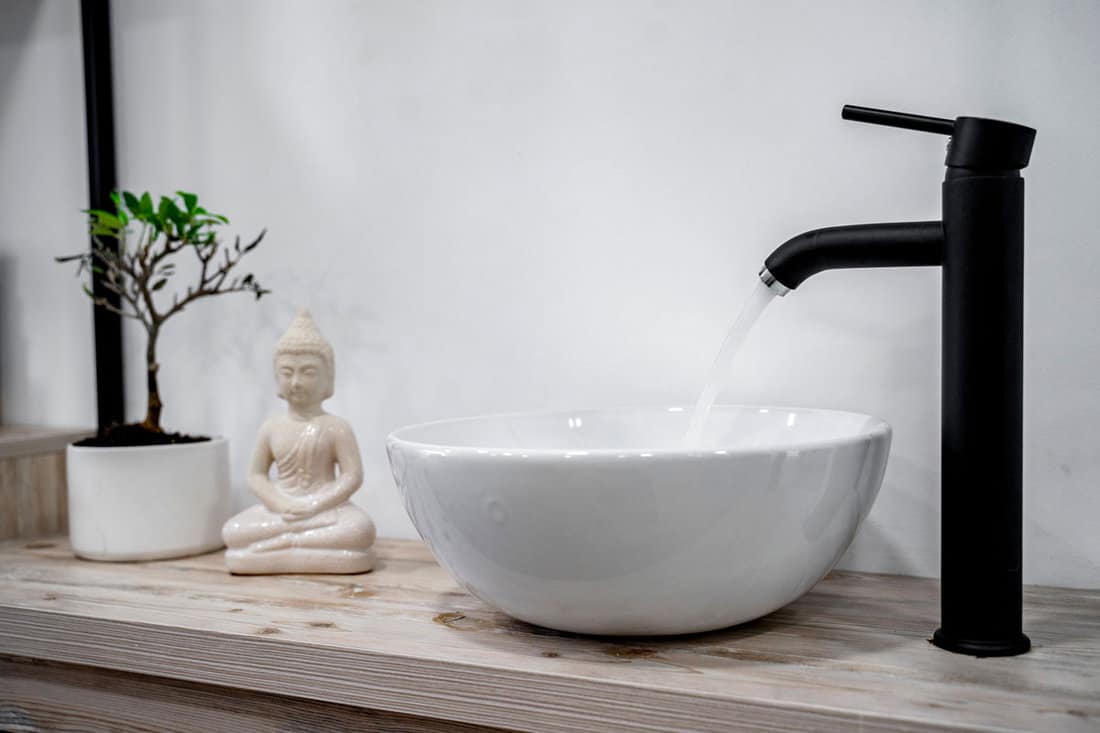
A drop-in sink sits above the countertop. The top lip might be half an inch tall, but could be more. When calculating the height of your sink, add the cabinet height, the countertop thickness, and the thickness of the lip on your sink.
Some manufacturers use the term self-rimming sinks instead of drop-in sinks.
Here is an example of a drop-in sink:
Kohler Self-rimming Sink
Click here to see this sink on Amazon.
Undermount
An undermount sink hangs completely below your countertop. Considering this type of sink is what type of countertop you have because you can't use them with some types of counters.
With this kind of sink, there is no lip protruding above the counter. To calculate your height you add the counter thickness and the height of the cabinet.
Here is an example of an undermount sink:
Wells Sinkware Rectangular Undermount Sink
Click here to see this sink on Amazon.
Vessel
A vessel sink sits atop your countertop. Something to consider is whether there is anything the vessel may obstruct once installed. The required higher faucet may block part of the mirror, trim, or nearby electrical outlets.
You usually install these sinks completely on top of the counter, which means you add the cabinet height, countertop thickness, and the vessel's height to get your sink height. This type of sink may cause a problem for shorter users if you place it on a taller cabinet. If there are any wheelchair users in the family, this may cause problems for them as well.
Here is an example of a vessel sink:
VCCUCINE Rectangular Vessel Sink
Click here to see this sink on Amazon.
Pedestal Sink
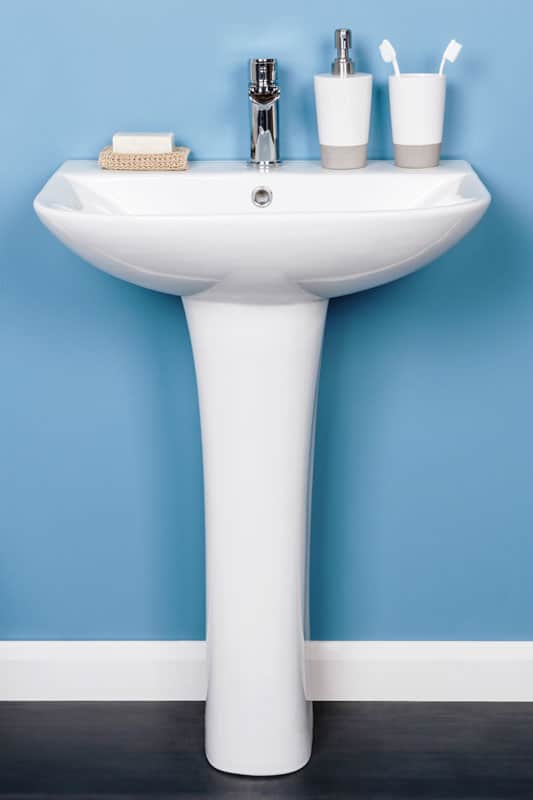
Pedestal sinks are available in a variety of heights, sometimes as low as 27.5 inches and up.
You may encounter a pedestal sink because it may not line up with your existing plumbing. This isn't always a height problem, but something to consider when purchasing.
With a pedestal, the height will be only the height of the pedestal sink. Some of these will list their height as the height to the top of the built-in backsplash, so you should measure to the front lip instead. There is no cabinet or countertop to consider with this style, just the sink and the matching pedestal.
Here is an example of a pedestal sink:
Fine Fixtures Roosevelt Pedestal Sink
Click here to see this sink on Amazon.
Wall-hung
Wall-hung sinks are a little different than the others. You have more ability to adjust the height to suit your preferences and needs since they hang on the wall and have no base to connect them to the floor.
But with a wall-hung sink, you usually need to do extra work during the installation to add braces into the wall to support the sink. You should also consider your plumbing location because if you set the sink too low for your existing plumbing, it could require even more work to lower the drains and incoming water lines.
Your height with this kind of sink is going to be whatever you choose to set it at.
Here is an example of a wall-hung sink:
Wall Mount Bathroom Sink By Renovators Supply Manufacturing
Click here to see this sink on Amazon.
Keep in mind; there are guidelines produced by the ADA for public spaces to make them accessible. ADA requirements don't apply in private homes, but if you have a family member in a wheelchair, they give some good guidelines to consider.
ADA Guidelines:
When you pick out the sink, vanity cabinet or pedestal, and countertop style you will have the basis for the height you are going to have in the end. If you have an existing sink that is a comfortable height for you, base your decision on that. While many people like the newer, taller heights, some find them difficult to use. In the end, the height of the sink is up to you, and the limitations of your existing structure.
What Is The Standard Depth Of A Bathroom Sink?
There is no set standard of depth for a bathroom sink. Most sinks you find fall somewhere between five and seven inches, but it is relatively easy to find a deeper or shallower sink.
How Big Should A Mirror Be Over The Bathroom Sink?
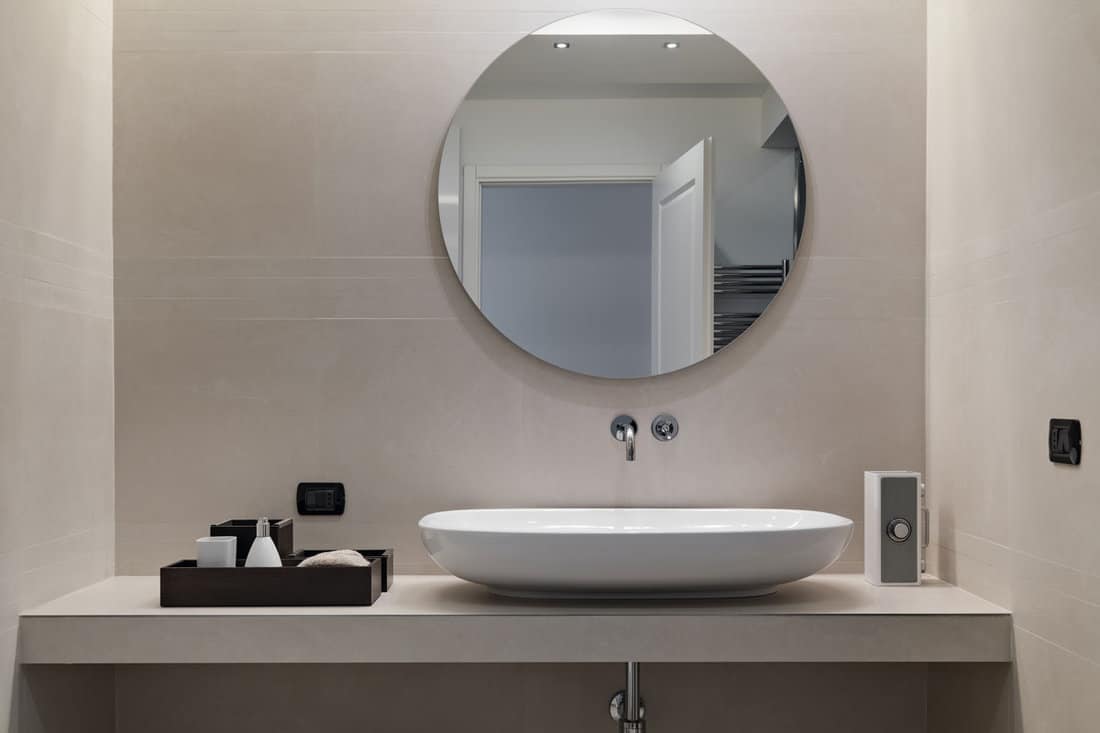
The mirror over your bathroom sink is important to the look and function of your bathroom. Here are some things to take into account:
- Room size
- Cabinet size
- Personal preference
- Frame style of mirror, if any.
If you have a very large bathroom, a small mirror will stand out and look lost in all that space. A high ceiling with a short mirror may be unappealing. And if your bathroom sink is along a narrow wall, you are going to have limitations no matter the overall room dimensions.
If you have a freestanding cabinet and your mirror ends near its edge, it may present an odd look. And if you are close to the edge but not quite in alignment with the edge, it may look like you tried and failed to line them up.
Think of how you are going to use the space and what you would like. Are you the kind who likes to stand directly in front of the mirror, or do you want to be able to move around a little while using it?
When you take these factors into account, you should know what size of mirror works for your bathroom. If you are indecisive, try cutting out a piece of paper or cardboard to match your considering size. Tape the paper or cardboard to the wall where you plan to place the mirror and see how that looks in the room. You may realize the size won't work for you and decide to go larger or smaller.
How Can You Make Your Bathroom Sink Taller?
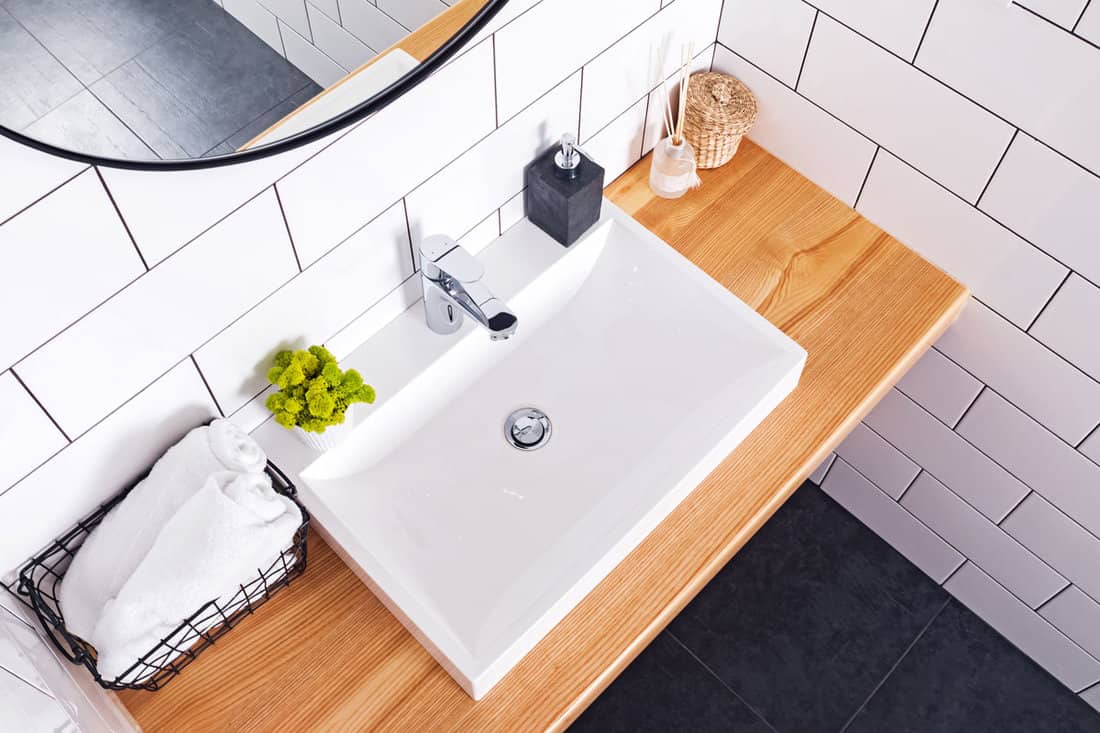
If your bathroom sink is too low for you, here are some of your options to raise it:
Switch Sink Styles
By switching to a vessel sink, you gain the sink's height since it will now sit above the counter, not below it. This may require a new countertop or a larger vessel than the previous sink hole.
Change to a taller cabinet
You can swap from your current cabinet to a taller cabinet. It is common to find a 36-inch cabinet now, so if your sink is 32 inches, you will gain a few inches.
Add a spacer under the cabinet base
Sometimes you can put a spacer under the base of the cabinet to lift it up. This way, you can set the height to whatever suits you, and if done correctly, may not be that noticeable.
Put a spacer between the cabinet and countertop.
Similarly, you can space between the cabinet and counter. If you do this, you build a solid spacer to hold the cabinet and then cover it with molding to match your bathroom. This limits you to what thickness of molding you can find, but can look nice when finished.
Attach legs to your cabinet
You can add legs to the current cabinet and set the height to whatever suits you. Be aware that this may reveal the floor underneath.
Keep in mind; you will need to extend your drain to the new height and make sure there are no obstacles like electrical outlets in the way.
In Conclusion

While there are no set standards for the bathroom sink height, most are between 32 and 36 inches. You can place your sink at any height you like, but you should consider the current and future users. Sometimes a taller sink works well for some people, but shorter people may struggle with it.
If you would like to know more about choosing a bathroom sink, check out these other great posts from HomeDecorBliss.com!





